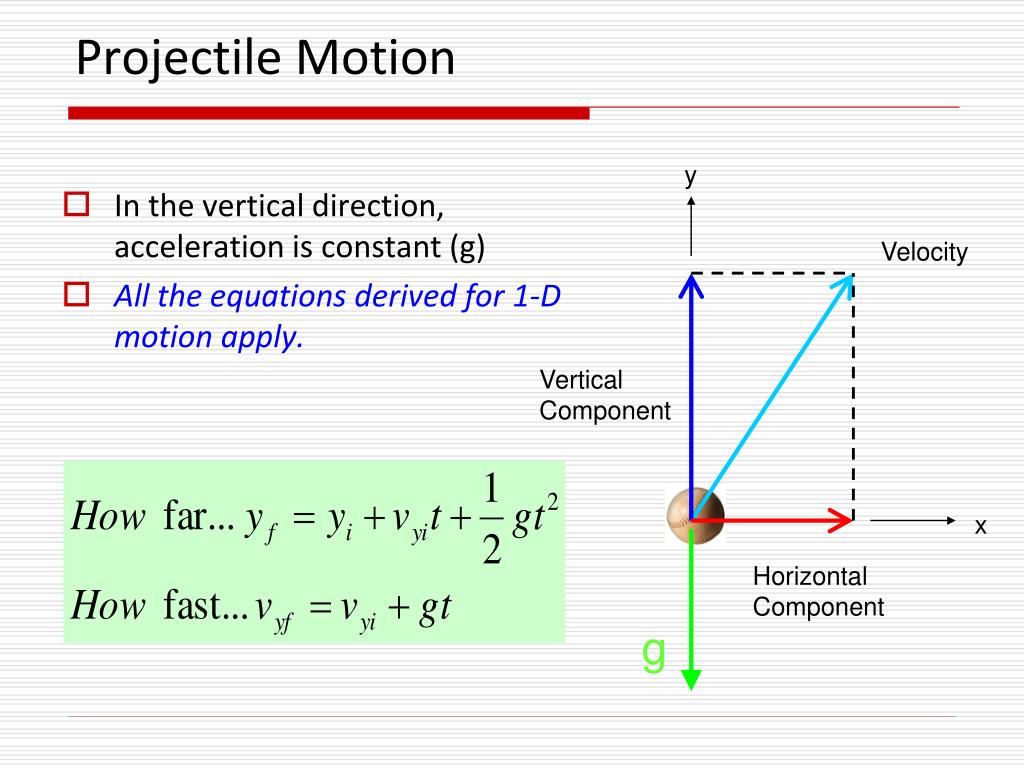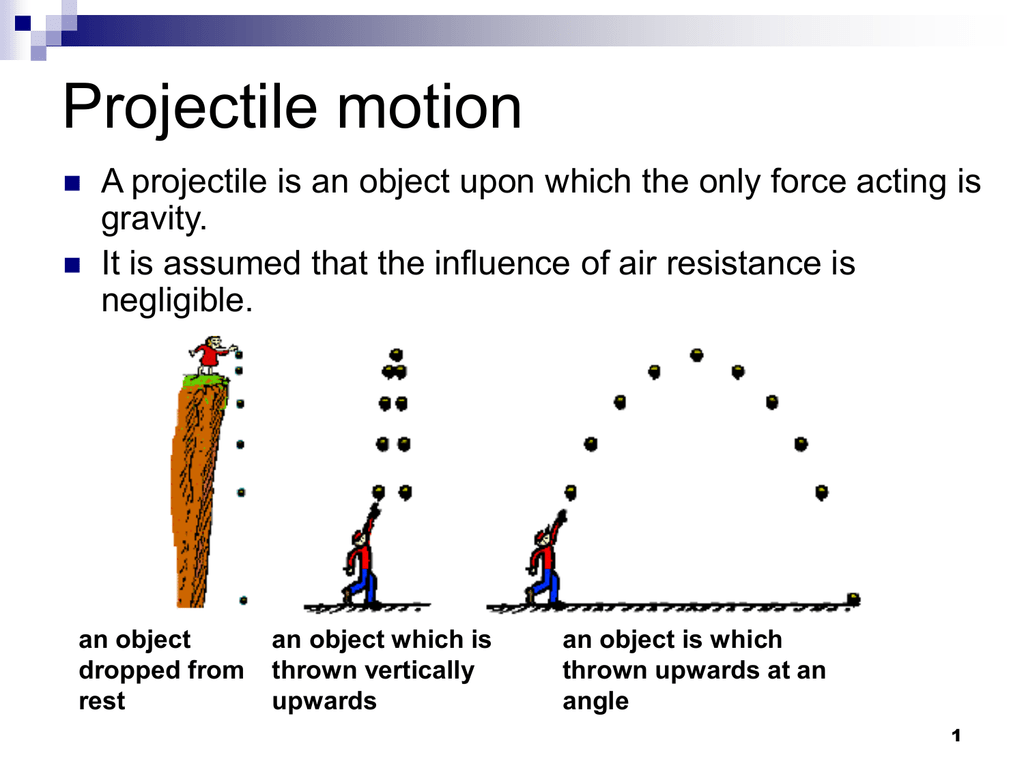

This fact was discussed in Kinematics in Two Dimensions: An Introduction, where vertical and horizontal motions were seen to be independent. The most important fact to remember here is that motions along perpendicular axes are independent and thus can be analyzed separately. In this section, we consider two-dimensional projectile motion, such as that of a football or other object for which air resistance is negligible. The motion of falling objects, as covered in Problem-Solving Basics for One-Dimensional Kinematics, is a simple one-dimensional type of projectile motion in which there is no horizontal movement. The object is called a projectile, and its path is called its trajectory. Projectile motion is the motion of an object thrown or projected into the air, subject to only the acceleration of gravity.

Apply the principle of independence of motion to solve projectile motion problems.Determine the location and velocity of a projectile at different points in its trajectory.Identify and explain the properties of a projectile, such as acceleration due to gravity, range, maximum height, and trajectory.

© Texas Education Agency (TEA).By the end of this section, you will be able to: We recommend using aĪuthors: Paul Peter Urone, Roger Hinrichs Use the information below to generate a citation. Then you must include on every digital page view the following attribution: If you are redistributing all or part of this book in a digital format, Then you must include on every physical page the following attribution: If you are redistributing all or part of this book in a print format, Changes were made to the original material, including updates to art, structure, and other content updates.

Want to cite, share, or modify this book? This book uses theĪnd you must attribute Texas Education Agency (TEA). To do this, we separate projectile motion into the two components of its motion, one along the horizontal axis and the other along the vertical. Since vertical and horizontal motions are independent, we can analyze them separately, along perpendicular axes. Keep in mind that if the cannon launched the ball with any vertical component to the velocity, the vertical displacements would not line up perfectly.
#Projectile motion free#
You can see that the cannonball in free fall falls at the same rate as the cannonball in projectile motion. Figure 5.27 compares a cannonball in free fall (in blue) to a cannonball launched horizontally in projectile motion (in red). The most important concept in projectile motion is that when air resistance is ignored, horizontal and vertical motions are independent, meaning that they don’t influence one another. Ask students to guess what the motion of a projectile might depend on? Is the initial velocity important? Is the angle important? How will these things affect its height and the distance it covers? Introduce the concept of air resistance. Review addition of vectors graphically and analytically.


 0 kommentar(er)
0 kommentar(er)
